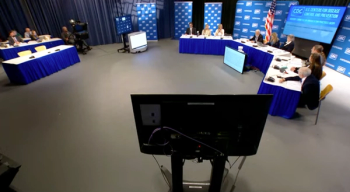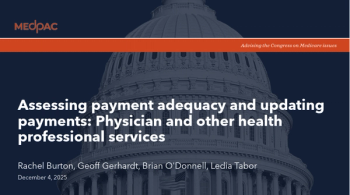
Five tips for maximizing data security and ensuring HIPAA compliance
Building a foundation for cybersecurity can help physicians avoid costly mistakes.
Digital transformation is expanding the cyberattack surface in health care and other sectors. Today, threat actors are working overtime to exploit vulnerabilities in health care systems, its primary care physicians and their applications, resulting in data breaches that expose confidential and protected information. The Health Insurance Portability and Accountability Act of 1996 (HIPAA) is the national standard of protection of personal health care information. HIPAA violations, hacking incidents, ransomware attacks, phishing scams, and data extortion attempts are some of the most common types of health care industry data breaches reported to regulators each year.
A major reason why the health care sector and physicians remain an attractive target for cyber criminals is the wealth of sensitive data in medical records. Bad actors use this data to commit fraud or identity theft or put it up for sale on the black market. It has been
While headline-making data breaches in health care often involve large providers, the fact is all health care entities, from the largest to the smallest, are at risk of a data breach or cyberattack. That includes physicians in independent practices. Data shows that nearly half (
Provide staff with cybersecurity training
Human error is the cause of the vast majority of data breaches. In fact, Verizon’s 2022 Data Breach Investigations Report found that
As part of this cybersecurity training, medical practice staff should understand the serious regulatory, reputational, and financial consequences of a health care data breach as well as the types of cyberthreats targeting health care enterprises. They should learn how to identify, report, and stop attacks. The training should detail the importance of cybersecurity best practices such as using strong passwords, never leaving mobile devices unattended, never using unsecure consumer-grade messaging apps, and avoiding the use of unsecured wi-fi networks.
Use HIPAA-compliant communications and collaboration technology
To mitigate cyberthreats to electronic protected health information (ePHI), medical practices should use mobile messaging and collaboration platforms specifically built to protect this data.
It is important to be aware that not all mobile messaging and collaboration platforms are designed to protect data security and ensure patient privacy. Medical practices should be using enterprise-grade mobile messaging platforms architected with the security and compliance protocols that most effectively lock down digital communications including end-to-end encryption and strong administrative controls.
These secure mobile messaging tools encrypt data, providing uninterrupted security for data at rest and in transit which keeps messages secure from prying eyes and prevents these messages from being tampered with or altered.
The best HIPAA-compliant messaging platforms for medical practices also offer robust capabilities including secure video messaging along with voice and text that give health care providers the tools to convert communication and collaboration into improved patient care and more efficient workflows.
In 2022 the price of a HIPAA violation increased to adjust for inflation. HIPAA violations could now cost up to more than
Require multifactor authentication
Multifactor authentication (MFA) reduces unauthorized access to sensitive data like ePHI by requiring users to provide two or more verification factors to gain access to resources such as an online account or virtual private network (VPN). MFA typically works by requiring the user to enter their username and password in combination with another identifying factor – for example, a one-time use code or biometric such as a fingerprint.
Limit access to ePHI
To protect the security, integrity, and privacy of ePHI and remain HIPAA compliant, medical practices should limit the access and handling of this data to authorized staff only.
Keep software updated
Updating software is a critical measure for staying HIPAA compliant and reducing security vulnerabilities. These updates patch security flaws and help close the door on security threats like malware. Medical practices should regularly check for software and antivirus updates and immediately install security updates and patches on all devices used to access patient information.
In an environment of increasing cyberthreats, protecting the security and privacy of sensitive health information is more important than ever. Medical practices that take proactive steps to maximize data security and ensure HIPAA compliance, will reduce their cyber risk, and avoid the costly financial, reputational, and operational harm caused by data breaches.
Newsletter
Stay informed and empowered with Medical Economics enewsletter, delivering expert insights, financial strategies, practice management tips and technology trends — tailored for today’s physicians.















